The Stranglers of Bombay (1959)
Directed by: Terence Fisher
Written by: David Zelag Goodman
Starring: Allan Cuthbertson, Andrew Cruickshank, George Pastell, Guy Rolfe
UK
AVAILABLE ON R1 DVD
RUNNING TIME: 80 min
REVIEWED BY: Dr Lenera, Official HCF Critic
Captain Harry Lewis of the British East India Company is investigating why over two thousand natives are missing, but encounters a deaf ear from his superior, Colonel Henderson, who is more concerned with the local English merchants’ caravans which are also disappearing without a trace. To appease them, Henderson agrees to appoint a man to investigate, but Lewis is sorely disappointed when Henderson gives the job to the newly arrived, oblivious Captain Connaught-Smith, the son of an old friend of Henderson’s. Lewis believes that a gang is murdering both the men and animals of the caravans and then burying the bodies, and suspects that the culprits have secret informants among the merchants of the city….
My plan for these Hammer reviews was to give all the horror and fantastical films full length reviews and everything else short reviews, otherwise this will take me forever, though going on that basis I should have probably given Terence Fisher’s early films Stolen Face and Three Sided Triangle longer write-ups [and I may expand those two reviews at some point]. In any case, The Stranglers Of Bombay, while it undoubtedly has horrific content, is basically a period thriller set in Colonial India, so maybe it ought to just get a short review, but said horrific content is so high that it’s now getting a full length one. It’s quite an interesting movie, and as I began watching it I initially found it hard to understand that it was so little seen and never got released anywhere on home video, until I realised that this was the kind of movie that the PC morons object to [as a small amount of research revealed that many of them do], though it’s never limited the distribution of the surprisingly similar, and similarly criticised, Indiana Jones And The Temple Of Doom. More on that later. In any case, The Stranglers Of Bombay is quite an exciting, intense thriller with some intelligence, while its more realistic feel in a way makes it more disturbing then Fisher’s fantastical, more stylised Gothics. In fact, it sometimes feels like Val Guest rather than Fisher directed it.
Hammer commissioned a script from first time writer David Zelag Goodman [later to write Straw Dogs and Logan’s Run] entitled The Horror Of Thuggee, and partly inspired by the real life William Henry Sleeman who, after four decades, managed to eradicate the Thuggee cult from India, largely by hanging thousands of them. Stomach slittings, curse words and corpse mutilations were removed from the script before filming, and a snake and mongoose fight added. Some have said that the Guy Rolfe and George Pastell roles were intended for Peter Cushing and Christopher Lee. Intended as a colour film but eventually, for some reason, shot in black and white, it was filmed at Bray and the Surrey and Buckinghamshire countryside. Unbelievably, the BBFC gave it an uncut ‘A’ certificate [maybe it was the black and white and the more realistic tone?] after asking for two cuts [cries of pain and a red hot poker being thrust into someone’s face] but the US censors the MPAA removed shots of Karim, a female Thuggee member, reacting rather too positively to Thuggee violence, and a kicking scene. The 1996 UK video release used the US print and also removed the snake and mongoose fight, and considering that the US DVD is also the US cut, this is one Hammer film that, despite the BFI apparently possessing an uncut print, and the fact that you can see some of the missing shots in the trailer and the World Of Hammer TV series episode Costumers, hasn’t been seen in its full version since 1959, which is pretty absurd. Despite being apparently shot in ‘Strangloscope’, gaining cult status on the Continent and receiving much attack from aghast critics, The Stranglers Of Bombay, which was doubled billed with the thriller Killing Her Gently in the UK, did average business, and a planned sequel The Black Hole Of Calcutta was nixed.
The Stranglers Of Bombay is loosely based on fact and a certain amount of research was obviously done. Goodman’s script opens with the High Priest of the Thuggees [here’s something I didn’t know before I read up a bit on this film – the word “thug” actually derives from the word “Thuggee”] telling his followers, and the audience, the mythical events [which are actually a slight bastardisation of the original Hindu myth] which gave birth to the whole cult. The scene also lets us know we’re in for quite a violent picture as we see an initiate have his arm cut with a dagger before being branded. After the titles we switch to the British in their nice buildings, and the script seems to be having digs at the poor British management of India which, as with most businesses, is more concerned about the bottom line than doing good. The officer who should clearly be in charge of the investigation into the Thuggees becomes subordinate to a fool who doesn’t seem to see the seriousness of the situation and whose idea of ‘doing something’ is to sit behind a desk and interrogate people. Captain Lewis is the one who does the real investigating, something that quickly brings him into danger. He’s attacked on the street and the severed hand of his servant is thrown in through the window to land right in front of his wife. What makes this film a bit frightening is that these Thuggees are not only relentless in their brutality but seem to have members everywhere [one high placed official looking just like Roshan Seth out of Indiana Jones And The Temple Of Doom] who like to silence informers.
The film keeps cutting to the Thuggees carrying out horrific acts in set pieces which don’t gloat on the violence but do have an uncomfortable air of authenticity about them. We hear about, but don’t see in detail, tongues and eyes being gouged out, but we do see the unpleasant aftermaths with the now-disabled victims being kept alive in an cage, and we also see plenty of strangulations with the distinctive Thuggee silk scarves and stabbings. Even Lewis is tied down to the ground and cut so a snake is attracted to the blood and comes slivering along, but this scene ends rather daftly when a mongoose comes along to save the day. The film’s biggest sequence is a mass strangulation, the camera choosing to be a dispassionate observer rather than get up close and in there, which gives it a greater air of reality. The coda is when Captain Connaught-Smith wakes up in the morning to find, except for his three aides, everyone else dead in quite a chilling moment. Sadly the climax is very rushed, as if they’d ran out of money and couldn’t film the ending as scripted so came up with something on the spot. Its rather laughable brevity is a shame, because for the most part The Stranglers Of Bombay, despite the filmmakers never leaving England, is surprisingly convincing, a crowded market place set looking especially good, except for the many white people playing Indians which does provide some chuckles.
The Stranglers Of Bombay does show British folk ‘sorting out’ mess in India, but this particular ‘sorting out’ actually happened. I guess the PC brigade would only be happy if the script criticised the British presence in India at every opportunity [though I reckon even the film’s title today would be considered inappropriate considering we live in a stupid climate where it’s even hard to find a non-white villain], but it certainly doesn’t show all Indians as villains nor does it come across as patronising. Rather, it disturbingly shows how easy it is for vulnerable people to be roped into a murderous, dehumanised group that carries out its atrocities in the name of religion, and is therefore still pertinent today. There’s a subplot involving a man’s search for his brother which ends when he’s kidnapped and the brother is ordered to strangle him as part of an initiation for three trainee Thuggees. This is probably the most upsetting and intense moment in the film. The script has some good and pointed lines here and there, like when Lewis complains that his superiors are calling a mass grave of Thug victims a cemetery. The response he gets is: “Then it is a cemetery. Whoever rules decides the truth.” Overall The Stranglers Of Bombay, while still basically a exercise in sensationalism, does have some thought given to it and is overall less simplistic then you may think. What is also surprising is how different it is to other major Hammer films of the period considering it was made with much the same crew as most of the others aside from having a different cinematographer, Arthur Grant in his debut for Hammer, who generally had a much less stylistic approach than Jack Asher.
Guy Rolfe, who usually played villains in Hollywood, is a solid hero, but the film is stolen by George Pastell [who was actually Cypriot, but who hardly ever seemed to play Cypriots] as the High Priest, his commanding presence and delivery certainly giving the impression that he could exhort followers to do terrible things. Marie Devereux, in her few scenes, makes a strong, silent, rather disturbingly sexy impression as Karim, seemingly the only female cultist. It’s such a shame that shots featuring her comprise the majority of the cut footage. James Bernard’s score opens with possibly his most exciting main title cue ever, a pulsating, pounding piece that immediately gets the viewer in the right mood. As usual, the score consists of a few simple, moody motifs effectively applied, here making strong use of dissonant-sounding strings recalling his Quatermass and X- The Unknown scores, but also using a great deal of drum work. The Stranglers Of Bombay isn’t quite a neglected classic, but it’s certainly worthy of more attention than it gets. With its grittier, more realistic horrors which are plasted quite well onto a period thriller, it shows interesting pathways which Hammer could have gone down but, by and large, chose not to and instead opted to stick with their popular Gothics, while its Sadean elements, despite the black and white and what some may see as outdated attitudes, actually make it fit in quite well with today’s films.

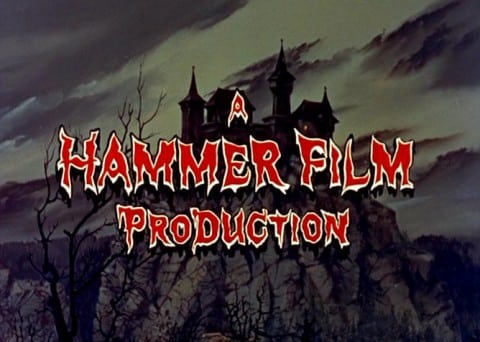
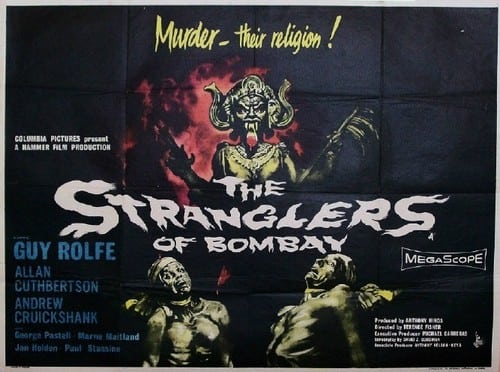
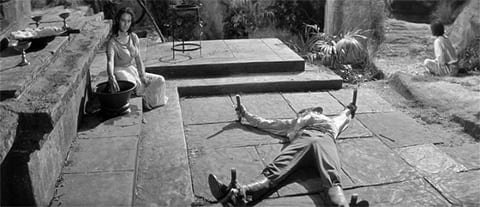
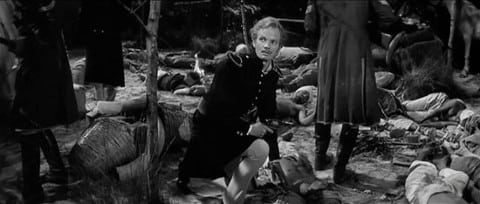




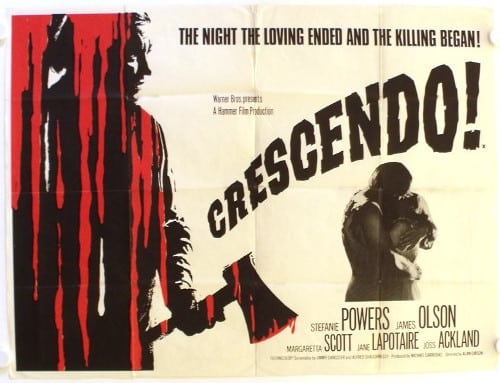
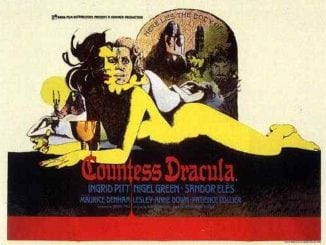

Be the first to comment